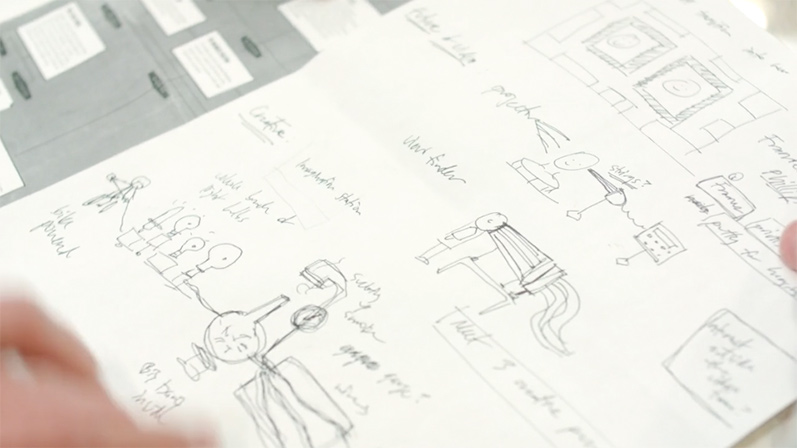We believe storytelling is much more engaging when the viewer has a choice in what they experience. We wanted to give viewers a way to interact with a new world of possibilities previously unimaginable with traditional, linear video, so we created our new brand video entitled “Future of Video,” to showcase Rapt Media’s technology.
We had a great time creating our own interactive brand video, and even though we eat, drink, and breath Rapt Media, we still learned a lot in the process. We decided to document that process and create an interactive video for our “Storytelling 2.0” series in order to share our experience.
Making of ‘Future of Video’
Producing an interactive video requires a different mindset than traditional linear video. In Episode 4 of our “Storytelling 2.0″ interactive video series, we dissect how to create an interactive video from pre-production to post-production using our own brand video, “Future of Video,” as an example. To do this, we partnered with two Denver-based production companies, Image Brew and Studio Hippo, to help us create this video.
Pre-Production

As you’ll see in Episode 4, planning for an interactive video differs from that of a traditional linear video. To start, storyboarding for an interactive video requires a new way of thinking.
“In our world as linear filmmakers, a storyboard looks like a storyboard,” said Image Brew CEO and founder Benjamin Jones. “In an interactive video, the storyboard is really a branching set of nodes that clearly show someone like myself and our whole production team what we should be thinking about, what are the choice points, how many scenes do we need to add that we maybe weren’t thinking of before, how do we lead into a scene, and then how do we come out of a scene depending on what the choices are.”
Production

While creating our interactive brand video, we were reminded of the importance of being conscious of all of the branching options that viewers will have and build time into filming different choice points. In one shot, for example, we filmed live action title cards, which the viewer clicks on to go to the next section of the video. It’s important to film every option, so being mindful of all the possible choices and having a detailed shot list is critical.
Post-Production

With our videos’ close integration with the sites that contain them via HTML5 standards, the creation process can be as much about technology as it is creativity. In Episode 4, Rapt Media’s VP of engineering, Jonathan Woodard, talks about the importance of integrating the technology and creativity:
“Having somebody who dictates the overall vision of the project is important, but then they need to have input both from the creative direction side for the video as well as the technical side in terms of what’s possible with the Web technologies,” Woodard said.
In one effect, our actress sticks her hand above the frame and it’s replaced by a lobster claw on the webpage. Before shooting, we ran several tests to see if this would be possible so that we didn’t run into a wall in post-production. It’s important that the creative and technical people behind the video are working closely together and understand the details of each effect so that it can be successfully implemented later in the process.
A New Process for Better Results
Interactive video production is a unique process that requires a new way of thinking and shifts the current way we create video. It pays off in the end in the form of content that more closely integrates with the Web and better engages viewers.
Watch and interact with Rapt Media, Image Brew, and Studio Hippo as they explore the end-to-end process of creating an interactive video.







